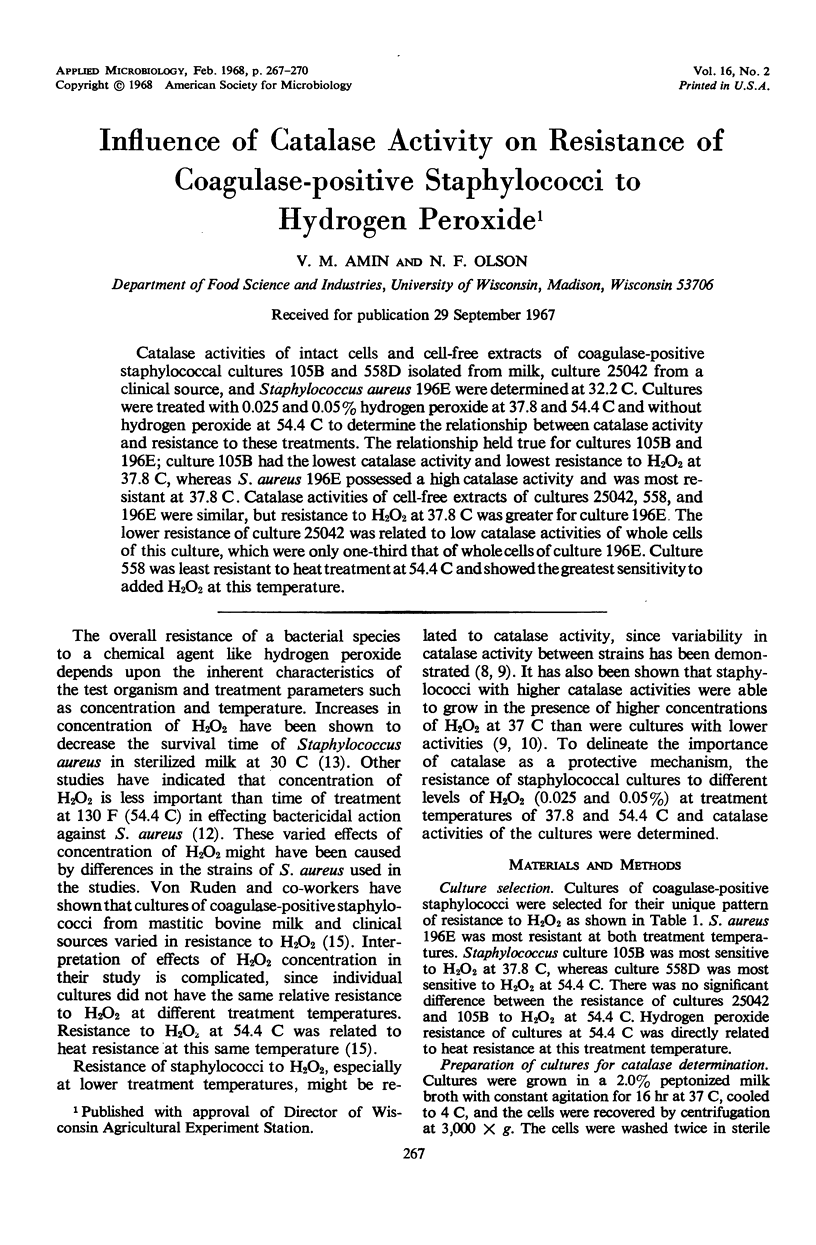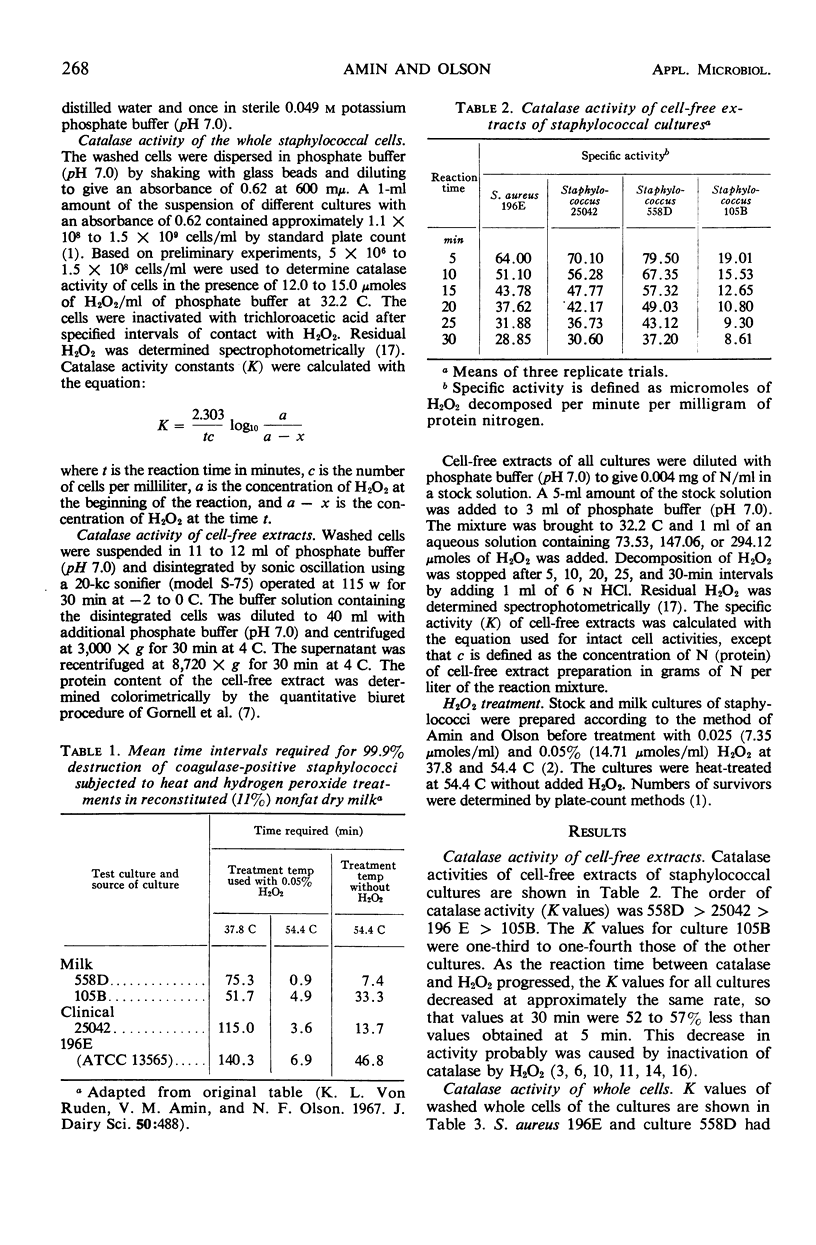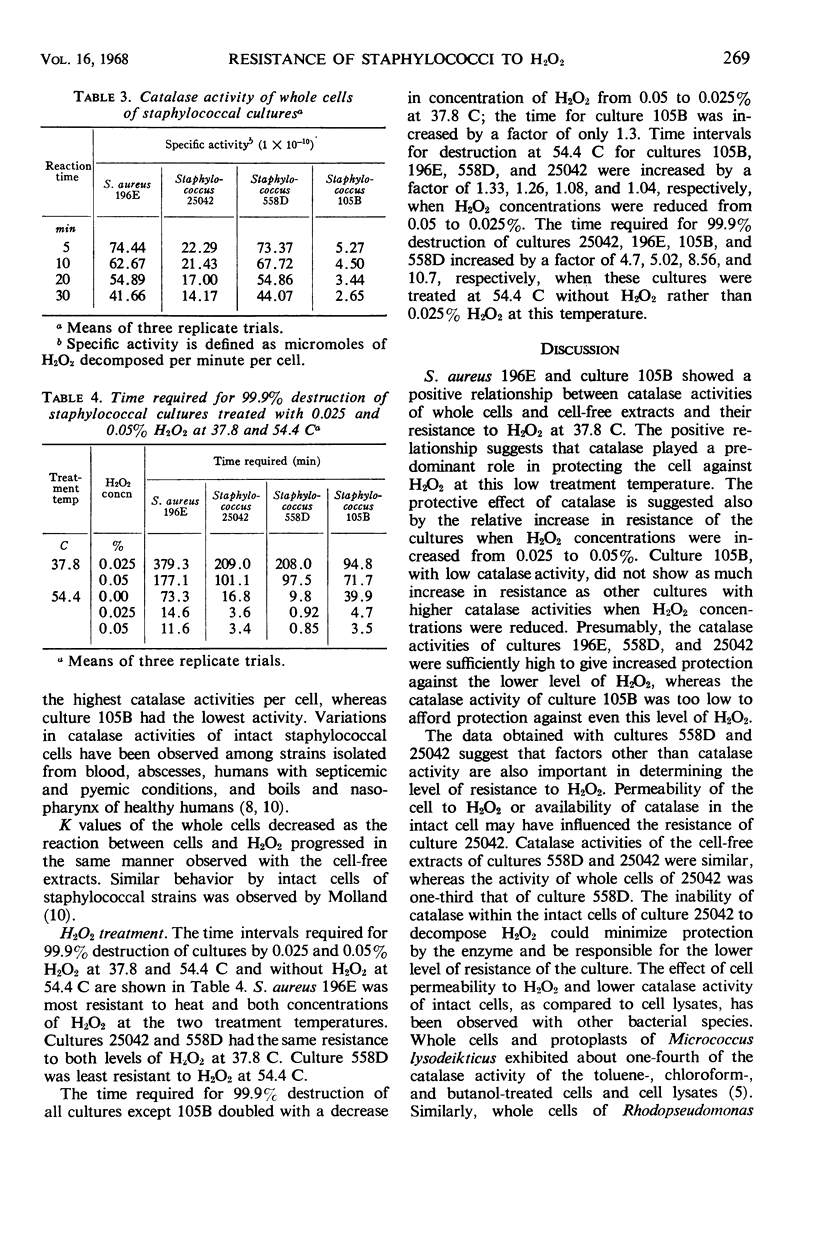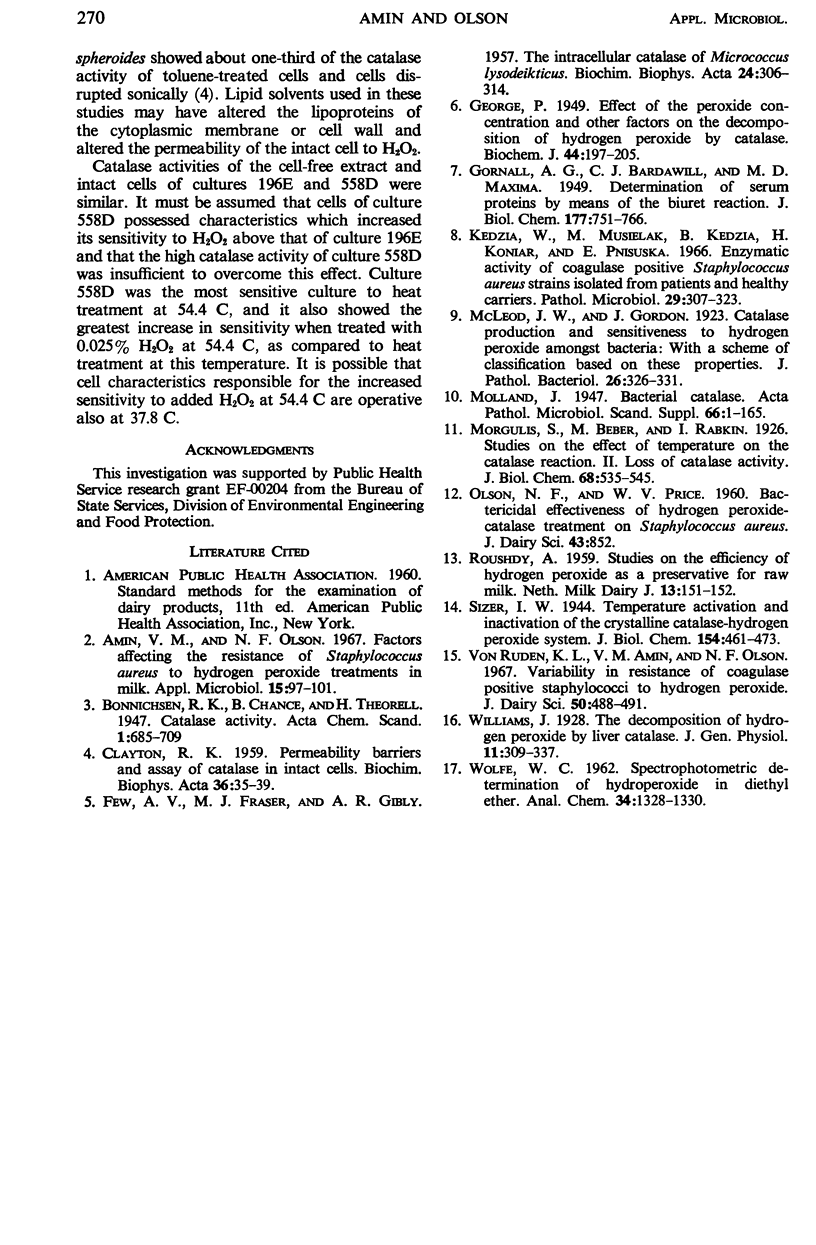Abstract
Catalase activities of intact cells and cell-free extracts of coagulase-positive staphylococcal cultures 105B and 558D isolated from milk, culture 25042 from a clinical source, and Staphylococcus aureus 196E were determined at 32.2 C. Cultures were treated with 0.025 and 0.05% hydrogen peroxide at 37.8 and 54.4 C and without hydrogen peroxide at 54.4 C to determine the relationship between catalase activity and resistance to these treatments. The relationship held true for cultures 105B and 196E; culture 105B had the lowest catalase activity and lowest resistance to H2O2 at 37.8 C, whereas S. aureus 196E possessed a high catalase activity and was most resistant at 37.8 C. Catalase activities of cell-free extracts of cultures 25042, 558, and 196E were similar, but resistance to H2O2 at 37.8 C was greater for culture 196E. The lower resistance of culture 25042 was related to low catalase activities of whole cells of this culture, which were only one-third that of whole cells of culture 196E. Culture 558 was least resistant to heat treatment at 54.4 C and showed the greatest sensitivity to added H2O2 at this temperature.
Full text
PDF



Selected References
These references are in PubMed. This may not be the complete list of references from this article.
- Amin V. M., Olson N. F. Factors affecting the resistance of Staphylococcus aureus to hydrogen peroxide treatments in milk. Appl Microbiol. 1967 Jan;15(1):97–101. doi: 10.1128/am.15.1.97-101.1967. [DOI] [PMC free article] [PubMed] [Google Scholar]
- CLAYTON R. K. Permeability barriers and the assay of catalase in intact cells. Biochim Biophys Acta. 1959 Nov;36:35–39. doi: 10.1016/0006-3002(59)90066-6. [DOI] [PubMed] [Google Scholar]
- FEW A. V., FRASER M. J., GILBY A. R. The intracellular catalase of Micrococcus lysodeikticus. Biochim Biophys Acta. 1957 May;24(2):306–314. doi: 10.1016/0006-3002(57)90199-3. [DOI] [PubMed] [Google Scholar]
- George P. The effect of the peroxide concentration and other factors on the decomposition of hydrogen peroxide by catalase. Biochem J. 1949;44(2):197–205. doi: 10.1042/bj0440197. [DOI] [PMC free article] [PubMed] [Google Scholar]
- Kedzia W., Musielak M., Kedzia B., Koniar H., Pniewska E. Enzymatic activity of coagulase-positive Staphylococcus aureus strains isolated from patients and healthy carriers. Pathol Microbiol (Basel) 1966;29(3):307–323. doi: 10.1159/000161915. [DOI] [PubMed] [Google Scholar]
- Von Ruden K. L., Amin V. M., Olson N. F. Variability in resistance of coagulase-positive Staphylococci to hydrogen peroxide. J Dairy Sci. 1967 Apr;50(4):488–491. doi: 10.3168/jds.S0022-0302(67)87452-6. [DOI] [PubMed] [Google Scholar]


